#KW Suspensions
Explore tagged Tumblr posts
Text
Lotus Eletre Base: The Ultimate Luxury Electric SUV
₹2.55 Cr Performance & Powertrain Electric Powertrain:The Eletre Base boasts a 450 kW (603 bhp) motor with instantaneous torque delivery, providing a thrilling driving experience. Its single-speed automatic transmission ensures seamless acceleration, which is a hallmark of electric performance. 0-100 km/h in 4.5 seconds: Rivals many sports cars in acceleration. Top Speed of 257.49 km/h:…
#0-100 km/h in 4.5 sec#112 kWh battery#15.1-inch OLED Touchscreen#22 kW AC Charger#257 km/h top speed#4-Zone Climate Control#450 kW motor#600 km range#603 bhp#8 Airbags#Active Air Suspension#Adaptive cruise control#ADAS#Advanced Safety Features#All-Wheel Drive#Audi e-Tron Rival#automatic climate control#AWD#Blind Spot Monitor#Continuous Damping Control#Electric Adjustable Seats#Electric vehicle#EV#forward collision warning#Hands-Free Electric Boot#Heads-Up Display#Heated Steering#High-Performance EV#Hill descent control#KEF Premium Audio
0 notes
Photo

New Post has been published on https://www.vividracing.com/blog/suspension-upgrades-you-need-for-a-porsche-911-turbo/
Suspension Upgrades YOU Need for a Porsche 911 Turbo
In some past articles and videos we have discussed the best upgrades to get more power out of the Porsche 997 Turbo. Our long history of modifying the Porsche 911 Turbo cars has brought us to our most recent video where we talk about the best suspension upgrades to really get the car to handle. The 997 Turbo like most 911 isn’t made for aggressive enthusiast. Its quiet sounding exhaust, tall ride height where you could stick a fist in the wheel wells, and less than stellar handling is designed for the guy who just wants to own a Porsche Turbo. Lets be honest, everything that is done from Porsche is perfect for that guy. But you and I are not him and we want to have GT3 Cup handling and drive the piss out of our cars to the edge.
youtube
Vivid Racing and myself have big proponents of KW Suspensions as our coilover of choice for our Project Cars and customers. Having used them on everything from my personal Porsche 997 Turbo, 997.2 Turbo S, 991 Turbo, and plenty of other cars, their is no substitute. KW Coilovers are highly engineered in Germany to perform the best in the purpose of that vehicle. Proven in events like the 24 hours of Nurburgring, KW does testing on a 7 post shock dyno in its facility to the level of an F1 team. This is not some overpriced Chinese shock with 36 way adjustable dampening and a cute brand name. KW is the real thing. Their coilovers range from the V1 to their latest V5. In my opinion, the V3 is the best dual purpose coilover. With a monotube shock setup, independent rebound and compression, front progressive spring and a rear linear spring with helper spring, the KW V3 gives the best for a daily driver that wants to hit the mountain roads or setup impressive times on the track.
Shop KW Coilovers Here
Coilovers cannot be the only thing to change how your car handles. So we recommend doing a set of sway bars. Sway bars help balance the cars over and under steer. Even though the car has factory sway bars, doing adjustable, larger diameter sway bars help you really stiffen up the handling and get a neutrally balanced car. With the adjustment holes on the bar, you are able to alter how much over steer or under steer the car has. Most sway bars work with the factory sway bar links. Though for those wanting to really dial in the adjustments, getting aftermarket sway bar links is helpful.
Shop Porsche Sway Bars Here
The last essential suspension upgrade to the Porsche 997 Turbo we feel is the rear upper control arms. Companies such as RSS, SPL, and others manufacture these for the 997 Carrera and Turbo cars. These rear arms also know as Dog Bones, help dial in the camber and toe for a proper alignment. These control arms are usually a billet aluminum center with adjustable spherical rod ends on either side. This replaces the static rubber bushing dog bone. The new rear arms give a more rigid response which means better reaction to how the car handles with minor inputs to the steering wheel.
Shop Porsche Control Arms Here
There are more suspension upgrades that can be done to a Porsche 911 Turbo. These 3 items are great starters and will dramatically change how the car handles on the street and track. Giving you a more responsive and enjoyable, handling vehicle is the goal. Each one of these parts is top tier and purpose designed to meet the quality and expectations of Porsche owners. Remember that all of these parts are not any good with a proper vehicle alignment, good tires, and of course your skills as the driver!
0 notes
Text
KW Suspension Sweden är din favoritdestination för premium fjädringslösningar som förändrar ditt fordons prestanda och hantering. Som auktoriserad återförsäljare av KW Suspensions erbjuder vi ett brett utbud av banbrytande fjädringsprodukter designade för att förbättra din körupplevelse. Oavsett om du är en prestationsentusiast, en motorsportentusiast eller bara vill förbättra din dagliga pendling
0 notes
Text
youtube
KW Variant 3 LEVELING TOYOTA ALPHARD/VELLFIRE 30
KW Variant 3 LEVELING TOYOTA ALPHARD/VELLFIRE 30. ปรับ Rebound 16 ระดับ และปรับ Bump 12 ระดับ. ปรับความสูงได้ใกล้เคียงกับสแตนดาร์ด. Repower Thailand.
0 notes
Text










Take a look at this incredibly well-done 1989 Porsche 911 Carrera 4
This 911 underwent a comprehensive three-year restoration with over $210K invested. It received bodywork and a cream-colored exterior repaint, paired with a full interior makeover featuring Espresso Nappa leather and custom upholstery throughout.
The fun doesn’t stop there, this 911 also received a full suspension overhaul with KW Coilovers, a front and rear Brembo big brake kit, and the 3.6-liter flat-six was rebuilt to a 3.8-liter displacement. Some other notable modifications include an external fuel filler cap, projector headlights, 17” Fuchs-style wheels, Braum carbon-fiber seats, a MOMO Prototipo steering wheel, and a Billy Boat exhaust system.
Credit: bringatrailer wob_cars
584 notes
·
View notes
Text
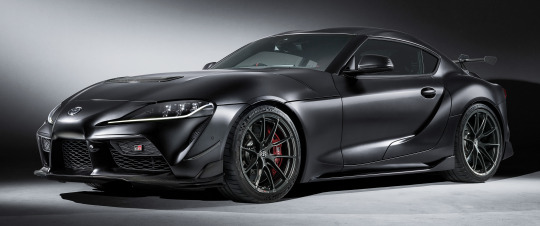





Toyota GR Supra A90 Final Edition, 2024. A limited run of 300 units that will mark the end of Supra A90 production. Its BMW-sourced 3.0 straight 6 has been upgraded to 429hp, while there's also KW suspension with adjustable dampening and Gazoo Racing front and rear stabilisers. Outside there are carbon fibre aero aids including a swan neck rear spoiler
#Toyota#Toyota GR Supra A90#Toyota Supra#Toyota GR Supra A90 Final Edition#Final Edition#2024#limited edition#special edition#straight 6#end of the line
137 notes
·
View notes
Text
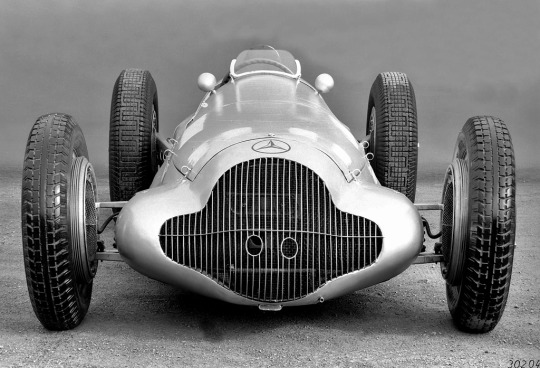
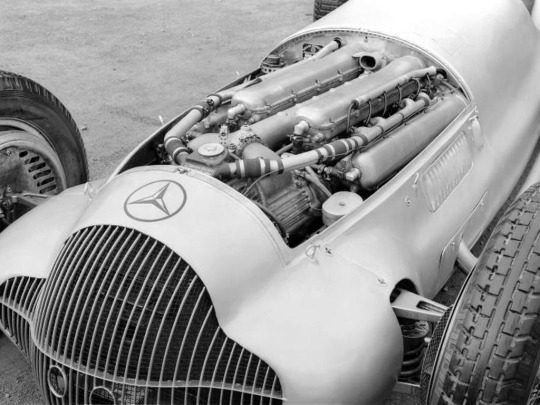
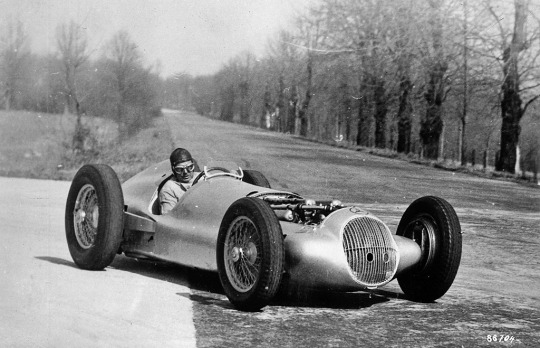
1938 Mercedes-Benz W154
In September 1936, the AIACR (Association Internationale des Automobile Clubs Reconnus), the governing body of motor racing, set the new Grand Prix regulations effective from 1938. Key stipulations included a maximum engine displacement of three liters for supercharged engines and 4.5 liters for naturally aspirated engines, with a minimum car weight ranging from 400 to 850 kilograms, depending on engine size.
By the end of the 1937 season, Mercedes-Benz engineers were already hard at work developing the new W154, exploring various ideas, including a naturally aspirated engine with a W24 configuration, a rear-mounted engine, direct fuel injection, and fully streamlined bodies. Ultimately, due to heat management considerations, they opted for an in-house developed 60-degree V12 engine designed by Albert Heess. This engine mirrored the displacement characteristics of the 1924 supercharged two-liter M 2 L 8 engine, with each of its 12 cylinders displacing 250 cc. Using glycol as a coolant allowed temperatures to reach up to 125°C. The engine featured four overhead camshafts operating 48 valves via forked rocker arms, with three cylinders combined under welded coolant jackets, and non-removable heads. It had a high-capacity lubrication system, circulating 100 liters of oil per minute, and initially utilized two single-stage superchargers, later replaced by a more efficient two-stage supercharger in 1939.
The first prototype engine ran on the test bench in January 1938, and by February 7, it had achieved a nearly trouble-free test run, producing 427 hp (314 kW) at 8,000 rpm. During the first half of the season, drivers such as Caracciola, Lang, von Brauchitsch, and Seaman had access to 430 hp (316 kW), which later increased to over 468 hp (344 kW). At the Reims circuit, Hermann Lang's W154 was equipped with the most powerful version, delivering 474 hp (349 kW) and reaching 283 km/h (176 mph) on the straights. Notably, the W154 was the first Mercedes-Benz racing car to feature a five-speed gearbox.
Max Wagner, tasked with designing the suspension, had an easier job than his counterparts working on the engine. He retained much of the advanced chassis architecture from the previous year's W125 but enhanced the torsional rigidity of the frame by 30 percent. The V12 engine was mounted low and at an angle, with the carburetor air intakes extending through the expanded radiator grille.
The driver sat to the right of the propeller shaft, and the W154's sleek body sat close to the ground, lower than the tops of its tires. This design gave the car a dynamic appearance and a low center of gravity. Both Manfred von Brauchitsch and Richard Seaman, whose technical insights were highly valued by Chief Engineer Rudolf Uhlenhaut, praised the car's excellent handling.
The W154 became the most successful Silver Arrow of its era. Rudolf Caracciola secured the 1938 European Championship title (as the World Championship did not yet exist), and the W154 won three of the four Grand Prix races that counted towards the championship.
To ensure proper weight distribution, a saddle tank was installed above the driver's legs. In 1939, the addition of a two-stage supercharger boosted the V12 engine, now named the M163, to 483 hp (355 kW) at 7,800 rpm. Despite the AIACR's efforts to curb the speed of Grand Prix cars, the new three-liter formula cars matched the lap times of the 1937 750-kg formula cars, demonstrating that their attempt was largely unsuccessful. Over the winter of 1938-39, the W154 saw several refinements, including a higher cowl line around the cockpit for improved driver safety and a small, streamlined instrument panel mounted to the saddle tank. As per Uhlenhaut’s philosophy, only essential information was displayed, centered around a large tachometer flanked by water and oil temperature gauges, ensuring the driver wasn't overwhelmed by unnecessary data.
97 notes
·
View notes
Video
youtube
"Speed Demon!"/"More Flakka!”
The Turbopanzer’s blistering top speed was its primary advantage. Originally intended for a 200hp 8-cylinder V-engine from the KW-AN, the treaty with Sopwith resulted in the transfer of a number of powerful 12-cylinder engines, the machine’s top speed leapt to a staggering 48km/h. However, the machine did have many stark disadvantages, limited firepower, unreliable starter, sluggish clutch-steering, and rough ride. The breakdown of order at the start of the war against Gotha left many of them at the starting line.
The original Fokker tank plan called for mobile anti-aircraft guns to accompany the vehicles forward as deterrent against attack planes. Despite being a variant, the Flaktraktor arrived in service first, as it used an existing engine and suspension system. The driver position was moved to the front atop the engine, and the newly freed space was given over to a hand-cranked turret mounting triple 20mm flak guns taken from Air Destroyer. In action, the quickly-nicknamed “Flaktor” actually saw little use in its intended role, and was quickly pressed into service as an infantry support gun, especially in urban combat.
26 notes
·
View notes
Text
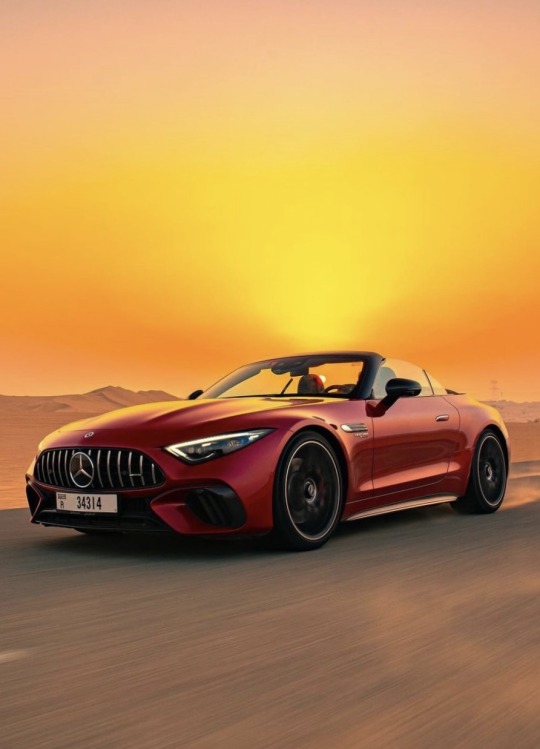
AMG SL63 „An Icon Reborn“.
Mercedes-AMG SL, the new edition of an icon, returns to its roots with a classic soft top and sporty character. At the same time, the luxurious roadster as a 2+2 seater is particularly suitable for everyday use and puts its power down on the road with all-wheel drive for the first time.
High-tech components such as the AMG ACTIVE RIDE CONTROL suspension with active anti-roll stabilisation, rear-axle steering, the optionally available AMG ceramic high-performance composite brake system and the standard-fit DIGITAL LIGHT with projection function sharpen the sporty profile.
In combination with the AMG 4.0-litre V8 biturbo engine, this results in a driving experience of the highest order. As a consistent Performance Luxury model, Mercedes-AMG in Affalterbach has developed the SL completely independently. Two models with AMG V8 engines will kick off the market launch.
At market launch, the new SL starts with two output levels of the AMG 4.0-litre V8 biturbo engine. The engines are assembled purely by hand at the company’s site in Affalterbach according to the „One Man, One Engine“ principle. In the top model SL 63 4MATIC+ (combined fuel consumption 12.7-11.8 l/100 km, combined CO2 emissions 288-268 g/km)[1].
The engine develops 430 kW (585 hp) and provides a maximum torque of 800 Nm over a wide rev range from 2500 to 4500 rpm. Accelerating from 0 to 100 km/h takes only 3.6 seconds, the top speed is 315 km/h. In the SL 55 4MATIC+ (combined fuel consumption 12.7-11.8 l/100 km, combined CO2 emissions 288-268 g/km), the V8 unit develops an output of 350 kW (476 hp) and a peak torque of 700 Nm. The sprint from standstill to 100 km/h takes 3.9 seconds, the top speed is 295 km/h.
Mercedes-AMG One man, one engine Handcrafted by Michael Kübler @f1mike28 in Germany Affalterbach.
Driving Performance is my Passion! Mercedes-AMG the Performance and Sports Car Brand from Mercedes-Benz and Exclusive Partner for Pagani Automobili. Mercedes-AMG Handcrafted by Racers.
#amg#sl#sl63amg#sl63#sl55amg#sl55#sl63amgeperformance#sl63eperformance#eperformance#mercedesamg#mercedes#mercedesbenz#affalterbach#onemanoneengine#pagani
13 notes
·
View notes
Text
Movie Night Bakugo Katsuki x Black Reader.
-Have this head cannon while I listen to the oldest music ever 💀
-FOR MY SISTAS OUT THERE!
-You snuggle under his arm as you wrap on of yours around his midsection, feeling the kiss that he planted on your head as you pick the remote up.
-"𝙒𝙝𝙖𝙩 𝙖𝙧𝙚 𝙮𝙤𝙪 𝙥𝙪𝙩𝙩𝙞𝙣' 𝙤𝙣?" He asks as he looks at the search bar to see 'Friday' being typed out.
-"𝑫𝒐𝒏'𝒕 𝒘𝒐𝒓𝒓𝒚, 𝒚𝒐𝒖 𝒈𝒐𝒏 𝒍𝒐𝒗𝒆 𝒕𝒉𝒊𝒔!" You clicked on the movie as Katsuki raised a brow in suspense, not worrying anymore as he snuggled up with your plush body and watched the movie with you.
-About an hour later, you look up to see a small smirk on his face as he kept his eyes locked on the screen.
-"𝒀𝒐𝒖 𝒍𝒊𝒌𝒆 𝒊𝒕?" You asked as he heard your lil mischievous giggle. "𝙉𝙤, 𝙨𝙝𝙪𝙩 𝙪𝙥 𝙖𝙣𝙙 𝙬𝙖𝙩𝙘𝙝 𝙩𝙝𝙚 𝙢𝙤𝙫𝙞𝙚. 𝙈' 𝙣𝙤𝙩 𝙜𝙤𝙣𝙣𝙖 𝙗𝙚 𝙩𝙝𝙚 𝙤𝙣𝙡𝙮 𝙤𝙣𝙚 𝙬𝙖𝙩𝙘𝙝𝙞𝙣𝙜 𝙩𝙝𝙞𝙨 𝙬𝙝𝙞𝙡𝙚 𝙮𝙤𝙪𝙧 𝙖𝙨𝙨 𝙞𝙨 '𝙨𝙡𝙚𝙚𝙥."
-After the movie, you begged to watch another as he kept saying to go back to your dorm room. "𝑷𝒍𝒆𝒆𝒆𝒂𝒔𝒆? 𝑰𝒕'𝒍𝒍 𝒃𝒆 𝒈𝒐𝒐𝒅 𝑰 𝒑𝒓𝒐𝒎𝒊𝒔𝒆 𝒐𝒏 𝒎𝒚 𝒍𝒊𝒇𝒆!" He furrowed his brows as he considered it. "𝙁𝙞𝙣𝙚...𝙗𝙪𝙩 𝙮𝙤𝙪'𝙧𝙚 𝙜𝙤𝙞𝙣𝙜 𝙗𝙖𝙘𝙠 𝙩𝙤 𝙮𝙤𝙪𝙧 𝙙𝙤𝙧𝙢 𝙖𝙨 𝙨𝙤𝙤𝙣 𝙖𝙨 𝙞𝙩'𝙨 𝙤𝙫𝙚𝙧."
-He smirked again as you put on 'Norbit'.
IT'S TOO TRUE LIKE HE WOULDN'T LOVE A FINE CARAMEL GIRL WITH AMAZING TASTE💀
𝙰𝚗𝚢𝚠𝚊𝚢𝚜 𝚝𝚑𝚊𝚝𝚜 𝚒𝚝 𝚏𝚘𝚛 𝚝𝚘𝚍𝚊𝚢! 𝙻𝚘𝚔𝚒 𝚏𝚒𝚌 𝚜𝚝𝚒𝚕𝚕 𝚌𝚘𝚖𝚒𝚗𝚐 𝙸 𝚓𝚞𝚜𝚝 𝚐𝚘𝚝𝚝𝚊 𝚜𝚝𝚘𝚙 𝚙𝚕𝚊𝚢𝚒𝚗𝚐 𝙰𝚠𝚊𝚛𝚍 𝚃𝚘𝚞𝚛 𝚋𝚢 𝙰 𝚃𝚛𝚒𝚋𝚎 𝙲𝚊𝚕𝚕𝚎𝚍 𝚀𝚞𝚎𝚜𝚝- 😭
-𝙰𝚕𝚜𝚘 𝚊 𝚜𝚖𝚞𝚝𝚝𝚢 𝚂𝚙𝚒𝚔𝚎 𝚂𝚙𝚒𝚎𝚐𝚎𝚕 𝚏𝚊𝚗 𝚏𝚒𝚌𝚝𝚒𝚘𝚗 𝚠𝚒𝚕𝚕 𝚋𝚎 𝚌𝚘𝚖𝚒𝚗𝚐 𝚜𝚘𝚘𝚗~ 😏
He would probably die laughing at Eddie Griffin and Katt Williams being pimps in the movie! Especially one specific line.
"Its raining little white women" EG
"My prayers have been answered!" KW
#im tired#bakugou headcanons#bnha bakugou#bakugou x black reader#bakugou katsuki#bnha bakugo katsuki#katsuki bakugo x reader#mha x reader#mha bakugou#my hero academia#boku no hero academia#class 1a#my hero acedamia#bnha#he loves them#He won't be surprised when you keep sleeping in class tho-
65 notes
·
View notes
Text




The ultimate driving machine. Dan’s gorgeous BMW G80 M3 doesn’t just look pretty; it moves too. It’s equipped with a set of CTS turbos, Eisenmann Exhaust down pipes, titanium intakes, and an E50 tune. And it rides on KW Suspension V3 coilovers, Michelin tires, and 20x10/20x11 Forgeline forged three piece FF3C Open Lug wheels finished with Gunmetal centers & Black Pearl outers! See more at: https://www.forgeline.com/customer-gallery-dan/cgk2768
🇺🇸🇺🇸🇺🇸
#forgeline#forgelinewheels#forgedwheels#customwheels#FF3C#OpenLug#ForgelineFF3COpenLug#notjustanotherprettywheel#doyourhomework#madeinUSA#BMW#G80#M3#BMWG80M3#ultimatedrivingmachine
13 notes
·
View notes
Text
Audi e-tron Sportback 55 Review: Luxury & Performance
₹1.26 Cr Design and Aesthetics Exterior Design:The e-tron Sportback 55 combines a coupe-like sloping roofline with Audi’s distinct styling cues, such as the Platinum Grey Single Frame Grille and Digital LED Matrix Headlights with dynamic animations. The high-gloss styling package adds a sophisticated flair, while the 20-inch alloy wheels and panoramic sunroof emphasize its sporty yet luxurious…
#0-100 in 5.7 seconds#150 kW DC Fast Charging#22 kW AC Charging#360° Camera#402 BHP#484 km Range#5-Star Safety Rating#664 Nm Torque#95 kWh Battery#adaptive air suspension#Advanced driver assistance#Ambient Lighting#Audi Drive Select#Audi e-tron Sportback 55 Technology#Audi Quattro System#Bang & Olufsen Sound System#Coupe SUV Design#Digital LED Matrix Headlights#Jaguar I-Pace Rival#Luxury Electric Vehicle#Mercedes EQC Competitor#MMI Touch Response#Premium Build Quality.#Premium EV#regenerative braking#Tesla Model X Alternative#Wireless charging
0 notes
Text
AE101 TRD 2000




In October 1994, Toyota Racing Development (TRD) introduced the AE101 TRD 2000, a highly exclusive version of the Corolla GT sedan designed specifically for the Japanese market. This model was meticulously engineered to emulate the performance specifications of the 1994 Corolla JTCC race car. Under the hood, the TRD 2000 featured a naturally-aspirated 2.0-liter 3S-GE engine, delivering 180 PS (132 kW), coupled with a new 5-speed S54 manual gearbox. To enhance its performance, TRD equipped the car with a heavy-duty clutch, a mechanical limited-slip differential (LSD), and a quick shifter, ensuring precise and responsive gear changes.
The TRD 2000's handling was significantly improved with a new suspension system that lowered the ride height by 20 mm, alongside 15-inch TRD Type-FT wheels shod with Yokohama Grand Prix M5 tires. The braking system was upgraded with TRD brakes, providing superior stopping power. A stainless steel dual exhaust system not only improved performance but also added a distinctive sound. The car's exterior featured a subtle trunk spoiler and was available exclusively in white, giving it a clean and sporty appearance.
Inside, the TRD 2000 was fitted with König Prinz P200 bucket seats and a TRD steering wheel, creating a driver-focused cockpit. Despite its impressive features and race-inspired design, the TRD 2000 was a rare sight on the roads. Originally, 99 units were planned for production, but only 10 were sold due to the high price tag, which was even higher than the cost of the Celica GT-Four ST205. This limited availability and unique blend of performance and refinement make the TRD 2000 a coveted piece of Toyota's automotive history.
#AE101 TRD 2000#AE101#JDM#Toyota AE101#Toyota Corolla#Corolla#Corolla TRD#TRD#Toyota Racing Development#トヨタカローラ#トヨタ#カローラ#JTCC#全日本ツーリングカー選手権#全日本#ツーリングカ#選手権
17 notes
·
View notes
Text
Är du trött på att uppleva en ojämn och skakig åktur i din bil? Se inte längre än professionella biltjänster för att göra din körupplevelse smidigare och roligare. Oavsett om du pendlar till jobbet eller ger dig ut på en lång bilresa är det viktigt att se till att ditt fordon är i optimalt skick för en bekväm resa. Biltjänster omfattar ett brett utbud av underhålls- och reparationsuppgifter som är inriktade på olika komponenter i ditt fordon. Dessa tjänster syftar till att ta itu med potentiella problem innan de eskalerar till stora problem.
#Modifierar Bil Servar Sweden#Porsche Motoroptimering#Köpa Reservdelar Sweden#Wastegate#Saab Motoroptimering#Kw Suspension Sweden
0 notes
Photo


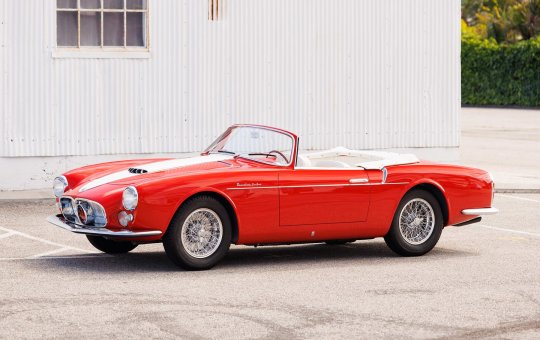


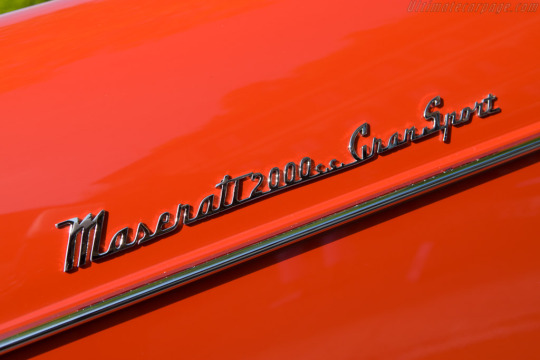


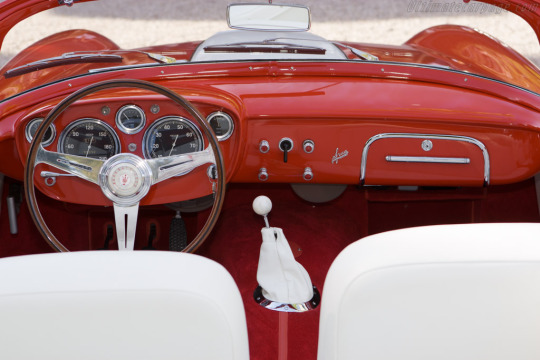

Maserati A6G/54 Spider by Frua (1 of 10).
From 1954 Maserati offered the final edition of the A6G sports car. As with its predecessor, the sales designation 2000 GT was frequently used in brochures and advertisements. On the race tracks of the World Sports Car Championship, the corresponding offshoots were called A6GCS. By 1957, only 60 Maserati A6G/54 cars had been built, with the bodies being exclusively built by external coachbuilders such as Allemano, Zagato and Frua.
So the A6G/54 presented at the Paris Motor Show in October 1954 had to meet high expectations. On the one hand, its driving performance was to clearly exceed that of its direct predecessor. On the other hand, Maserati naturally also wanted to increase its production figures again. And last but not least, there was direct competition with Ferrari, an up-and-coming company that had been enticing customers by building sports cars in the immediate vicinity since 1947. Accordingly, the engineers under Gioacchino Colombo began to thorougly rework the two-liter inline six-cylinder engine. Compared to the A6G, the ratio of bore to stroke was changed, turning a long stroke engine into a short stroke engine with two overhead camshafts. Compared to the A6GCS, Maserati used a chain instead of sprockets to drive the camshafts in the A6G/54 to improve reliability in everyday use. These measures increased the revs and thus the power output, which in this case was around 50 percent higher than that of the predecessor. Expressed in figures, 110 kW/150 hp was initially available, later even 118 kW/160 hp thanks to dual ignition.
As already mentioned at the beginning, Maserati at that time only produced the engines, transmissions and the tubular frame made of steel tubes including suspensions for the A6G/54. Then they sent the components to the coachbuilder selected by the individual customer. The official brochures offered a choice of four bodies. Tipo A and Tipo B came from Frua, Tipo C from Allemano and Tipo D from Zagato. Pinin Farina had previously fitted various A6 and A6G chassis, but then fell out of favour with Maserati when they entered into close cooperation with Ferrari. Only for the A6GCS, a few bodies were still being built there at the request of Maserati dealer Mimmo Dei.
This dealer was also the one who started the ball rolling for the A6G/54 Frua Spider. After a Spider based on a A6GCS chassis with the engine of the A6G/54 was completed in Pietro Frua’s workshop in the spring of 1955, Mimmo Dei ordered a small series of ten vehicles. However, only the first one was given the same design as the original model. The other nine were given an extended front and other modifications in detail. Different bumpers and small fake air intakes on the rear fenders for example.
68 notes
·
View notes
Photo



Laffite Atrax
The Atrax is a mashup of hypercar and SUV styling elements. A pure off-road suspension is standard equipment, while the Atrax Stradale is tuned more for on-road use. Laffite quotes 1,151 hp and 1,844 lb-ft of torque, which the startup claims will get the 4,850-pound Atrax from 0-62 mph in 3.8 seconds and on to a 149-mph top speed.
According to the Laffite, the Atrax will also have a "2+1" seating arrangement, 273 miles of range (likely as measured on the more lenient European WLTP testing cycle), and 350-kw DC fast-charging capability that will enable a 10-80% charge in 22 minutes.
#art#design#luxurycars#luxurycar#laffite#atrax#hypercars#hypercar#atrax stradale#off-road#off-grid#luxurylifestyle#mashup#suv#luxurysuv#e-cars#e-car
70 notes
·
View notes